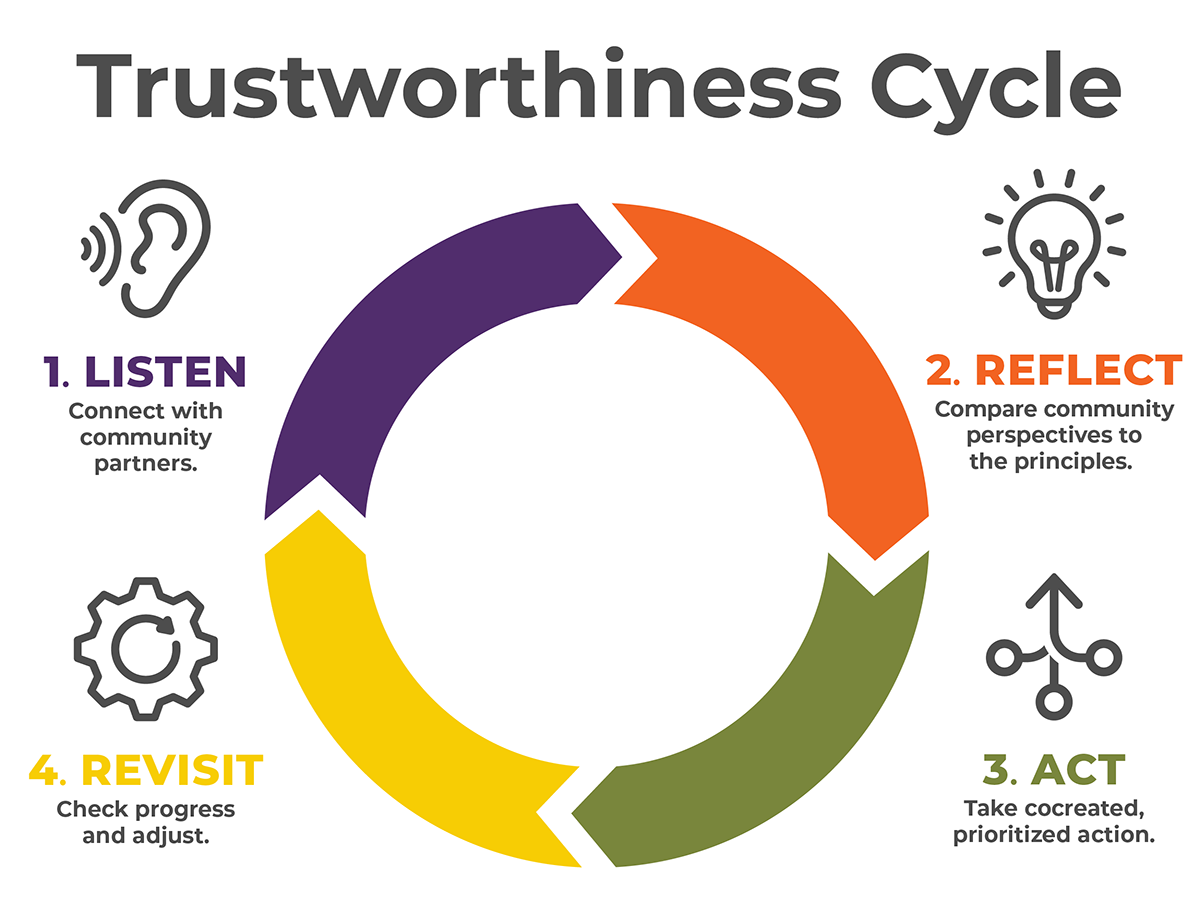Revisit — Trustworthiness Is a Cycle, Not a Onetime Fix
Building and maintaining trustworthiness is an ongoing process. The work doesn’t stop after implementing the action plan. Institutions must continuously assess the impact of their actions, remain open to feedback, and adjust their strategies when they fall short. This requires humility, transparency, and a willingness to recommit to trust-building efforts over time.
The toolkit emphasizes repeating the cycle: listen again, reflect again, and act again. This phase ensures that trust building is persistent.

Purpose: To evaluate the impact of actions taken and recommit to shared goals based on what has been learned.
Goal: A strategy for long-term accountability, learning, and community partnership.
Tools and Resources to Support Revisiting
Step 1. Take a pulse check. Reuse Reflection assessment questions to measure progress over time.
Step 2. Evaluate your impact. These community engagement impact resources help institutions evaluate what actions were implemented, what outcomes emerged, and where gaps remain. Curated tools from the National Academy of Medicine (NAM) offer practical metrics to guide evaluation efforts.
NAM Assessment Instruments for Measuring Community Engagement
Step 3. Create partnership feedback loops. Develop a structured process for ongoing community input that informs future planning and adjustments. Revisiting is not about repeating the same steps; it’s about deepening trust through continuous learning and shared accountability.
Review The Principles of Trustworthiness (PDF)
Step 4. Explore additional resources, tools, and organizational efforts to deepen your trustworthiness work.
- Building Trust: Focusing on Trust to Improve Health Care
- Coalition for Trust in Health & Science
- Fifty Years of Trust Research in Health Care: A Synthetic Review
- Conceptualizing and Measuring Trust, Mistrust, and Distrust: Implications for Advancing Health Equity and Building Trustworthiness
- Measuring Trust: Where are we and where do we need to go?
- Organizational Trustworthiness in Health Care
- Trust Trends: U.S. Adults' Gradually Declining Trust in Institutions, 2021-2024
- Trustworthy Care from Conception to Cradle: A Key Ingredient for Maternal Health Equity
“A long-term relationship is needed for this work to be effective—it’s not just about launching the toolkit and walking away.”
— Community Representative, Atlanta, Georgia
Submit Your Trustworthiness Resources
Have you developed a resource based on the Principles of Trustworthiness that other institutions could use? Contact us to learn more about how you can share it.